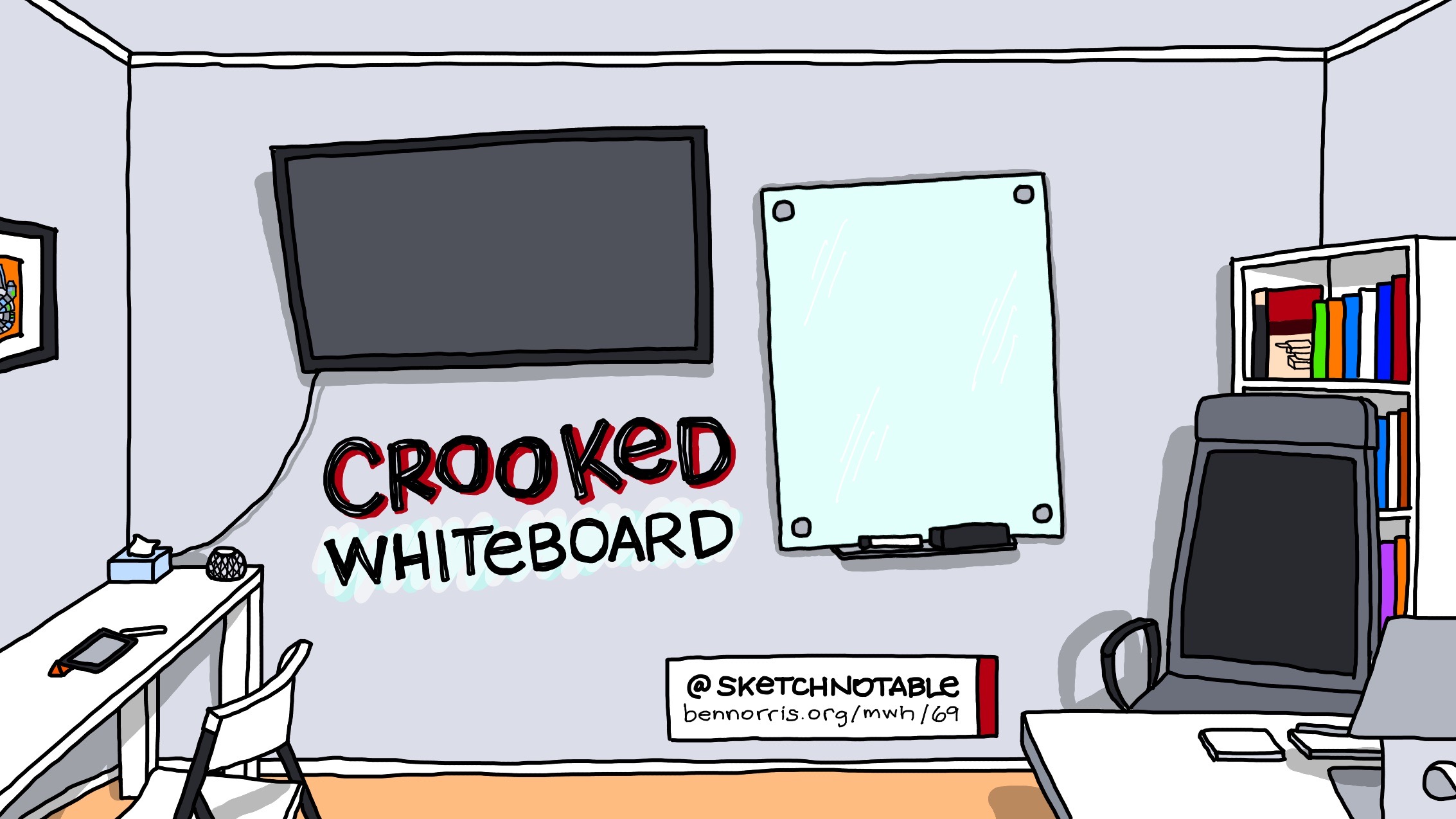This week’s update shares the story of hanging a whiteboard in my office, and how it will help challenge my OCD.
These weekly updates share life with OCD as part of my Mental Work Health project to reduce stigma around mental health, especially at work.
Story
Ever since renting my office space, I have wanted a whiteboard. I love writing and drawing, and the whiteboard has been an ideal medium in my professional life. A coworker joked that my title should be “Principal Whiteboard Engineer.”
Now that I no longer work for a company with an office, collaboration is a little different. Even though we all work remotely in my new company, four of the six of us are in Utah, and there have been a couple times when we’ve decided to get together in person. Since I have an office space already, it’s been a nice place to get together.
I wrote a few weeks ago about rearranging my office to make collaboration easier. I gave my OCD free reign for a bit, and sketched out options that would optimize for having a TV and a whiteboard. A couple hours before a meeting with a designer to review branding work, I mounted a TV on the wall so we could see things together more easily. It worked great.
Well, this week, I was having a collaborative session with someone in my new company to reflect and brainstorm. I finally decided the day before that a whiteboard would make a big difference in our conversation, and bought one1 at Office Depot.
The proprietor of my office space agreed to come help me hang the board the next day, so I took some time to measure out and mark the holes to take the least amount of his time possible. I used the Measure app on my phone as a level to get the holes lined up straight, and then I was set.
The next morning, everything went great. Having the holes pre-marked made everything go fast. There was just one problem that I noticed after we drilled the holes and installed the anchors for the screws.
It was crooked. Seriously crooked.
I had a choice in that moment. We hadn’t yet hung the board. I could have insisted that we remove the anchors we had just installed and drill new holes and straighten it out. Or I could leave it crooked.
I knew that if I left it crooked, it would be a source of irritation every time I walked in the room. Every time I looked at, wrote on, or shared the board, I would feel distress. And that realization sealed it.
I had to leave it.
So much of my work in learning to live with OCD is practicing distress tolerance. That is the crux of exposure response prevention (ERP) therapy, which is the gold standard in treating OCD. Essentially, ERP consists of working with a trained professional to create situations in which you repeatedly force your brain to confront what it claims is an emergency. You have to sit with your brain screaming that you need to take action (the compulsion) to neutralize the danger of the emergency (the obsession). Over time, you habituate and the distress fades. Your brain no longer claims that threat is an emergency.
I chose to embrace the distress I knew would come with a crooked whiteboard on the wall. My hope was that eventually the distress would decrease as I habituated.
I took a picture of the board and sent it to my wife with this message:
This is going to be a good exposure for me. Or maybe it’s going to be too much and I’ll need to take it down and change it. Time will tell.
She responded with compassion. My 9yo was with her and saw the picture, and reacted immediately: “Ewww!”
Lesson
Distress is an emotion that we all feel at times. And it is one that we often seek to avoid. We distract, we numb, we stuff in order to chase away the distress. But that never works. As my therapist keeps telling me:
Emotion buried alive never dies.
The best way to handle distress is to allow it to exist in our body. Give it space and acknowledge it. Sit with the feelings. Once we fully experience the emotion, it loses its power over us.
There is another lesson to be learned from this story. Rather than focus on the distress, lean in to the uncertainty. Instead of fortune-telling and deciding that we will feel distress, be curious. Observe what our actual experience is. And then sit with the emotions that actually arise.
Challenge
Over the coming week, be on the lookout for distress. When it shows up, let’s do the same—show up. Acknowledge the distress and just sit with it. Resist the urge to push it away. Embrace the uncertainty of the moment and be curious. We can’t know for sure what our experience will be.
This is hard! Remember that, and extend yourself compassion. And assume that those around you are doing something hard as well, and extend them compassion.
We’re all in this together.
-
I am quite picky about whiteboards, and decided I wanted a glass one. The thing I hate the most is not being able to erase well, and in my experience, glass boards are often the best for that. They are also versatile with what you can use to write on them. With those constraints, and wanting to pick one up that same day, this is the model that I chose: Quartet® Infinity™ Magnetic Unframed Dry-Erase Whiteboard. ↩

